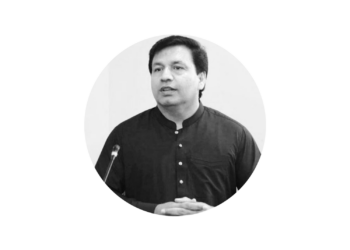When the Covid-19 pandemic hit, countries around the world went into panic mode. Even advanced economies struggled to cope and deal with the virus. Considering Pakistan’s economic track record, citizens had prepared for the worst. And why wouldn’t they? The rupee had already depreciated massively right before the pandemic, inflation and interest rates were high, investment and output was low, and the business sentiment wasn’t too positive.
Given the situation, anyone would feel things are only going to get worse. Policies in Pakistan’s favor would be implemented despite aid from the International Monetary Fund (IMF). Dr Baqir said Pakistan’s economy has been faring better during the third coronavirus wave than the first two. “There’s growth in various sectors, including cement and car sales, as well as fast-moving consumer products (FMCGs), “he said. “All of these have a 20-30% growth momentum”.
The Monetary Policy Committee consists of ten members: the Governor (Chairman), three members of the Board, nominated by the SBP Board, three senior executives of the Bank, nominated by the Governor, and three External Members (economists) appointed by the Federal Government on recommendation of the SBP Board. The External Members are appointed for a term of three years.
Monetary policy is the control of the quantity of money available in an economy and the channels by which new money is supplied. By managing money supply, a central bank aims to influence macroeconomic factors including inflation, the rate of consumption, economic growth, and overall liquidity. The monetary policy is the responsibility of the State Bank of Pakistan (SBP). SBP is established under the State Bank of Pakistan Act, 1956, following with subsequent amendments, provided the basis of its operations today. This act gives the authority to SBP to regulate the monetary and credit system of Pakistan.
The State Bank of Pakistan (SBP) has set the monetary policy at 12.25%, as the country grapples with uncertainty around the outlook for international commodity prices and global financial conditions, which had been exacerbated by the Russia-Ukraine conflict. Pakistan’s central bank raised its policy rate by 250 basis points to 12.25%, the bank said in a statement, the biggest hike in years. To change monetary policy the basic approach is simply to change the size of money supply.
This is usually done through open-market operations, in which short-term government debt is exchanged with the private sector. SBP issues Monetary Policy Statement and Decisions six times a year on its website. These documents provide analysis of current economic conditions and sets out the central bank policy rate. The Monetary Policy Committee (MPC) met on 8th, 9th and 10th February 2022 and based on an assessment of the current macroeconomic situation and the outlook, it voted unanimously to keep the policy repo rate unchanged at 4%.
Changes in interest rates can have different effects on consumer spending habits depending on a number of factors, including current rate levels, expected future rate changes, consumer confidence, and the overall health of the economy. Central banks adjust target interest rates in a country, raising them to increase the cost of borrowing when the economy is hot, and lowering them to make borrowing cheaper when the economy is sluggish. When interest rates go up, consumers may be more attracted to saving dollars that can earn higher interest rates rather than spend.
When rates go down, people may no longer wish to save, but instead spend and invest, even taking out loans to consume at low interest rates. An increase in interest rates may lead consumers to increase savings since they can receive higher rates of return. When unemployment is low, inflation tends to rise. When unemployment is high, inflation falls. Policymakers and voters prefer low unemployment and low inflation (but not a falling price level).
Dr. Reza Baqir was appointed as the Governor of the State Bank of Pakistan by the President of Pakistan on May 4, 2019, for a period of 3 years from the day he assumes the office of the Governor. He assumed his responsibilities on May 5, 2019. In addition to his regular responsibilities overseeing financial and monetary stability in the country and promoting sustainable economic growth, Governor Baqir has led several key new initiatives at the State Bank since assuming office.
These include an aggressive, targeted, and timely economic support package in response to COVID-19; creation of the Roshan Digital Account initiative to digitally onboard Pakistan’s diaspora into Pakistan’s banking system and provide incentives to use formal channels to remit and invest in Pakistan; launch and implementation of the National Payments Strategy to promote the digitization of financial services in Pakistan including a faster payment system Raast; creation of a comprehensive program to promote construction and housing finance especially for low income segments of society; development of a dedicated policy to reduce the gender gap in financial inclusion called Banking on Equality, as well as several other initiatives.
Pakistan central bank deputy governor Murtaza Syed will act as interim chief of State Bank of Pakistan until a new governor is announced. “As the term of Governor SBP Dr Reza Baqir has come to an end, as per law the senior most Deputy Governor takes over until. There will be various challenges for the new governor of State Bank of Pakistan such as takes the job ahead of an interest-rate review due May 23 even as the key borrowing cost has been raised by 525 basis points from its pandemic-era low to 12.25%.
He will also be tasked with setting the course of the policy to fight Asia’s second-fastest inflation as well as win the confidence of the International Monetary Fund as it examines releasing the remainder of a $6 billion loan. Talks with the lender are due to start this month over conditions for accessing the $3 billion balance, which may include doing away with subsidies on fuel and electricity. That could further stoke inflationary pressures and add to the challenge of the central bank trying to cool double-digit price-growth. Pakistan has seen its foreign exchange reserves decline to less than two months of import cover.
It faces a falling currency and a rising current account deficit. The South Asian nation is also resorting to long power cuts as electricity plants face fuel and funding shortages. But the present political and economic situation in Pakistan is hardly normal. The change at the top comes at a time when the country is grappling with a terrible economic crisis amid an uncertain political situation and is trying for the restoration of IMF funding to reduce pressure on the deteriorating balance of payments position.


















![Local residents at the Swat River, which is overflowing due to pre-monsoon heavy rains in the area on the outskirts of Mingora, the main town of Pakistan's Swat Valley [Sherin Zada/AP]](https://mmnews.tv/wp-content/uploads/2025/06/Flooding-in-Swat-river-120x86.jpg)









